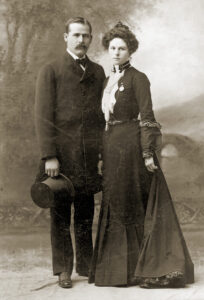Reviewed by Judy P. Sopronyi
By Jane Dunn
Alfred A. Knopf, New York
Author Jane Dunn approaches her book about these prominent figures in British history as biography rather than history. In Elizabeth & Mary: Cousins, Rivals, Queens she focuses on the tumultuous relationship between the two queens who shared a bloodline and an island, but never met. By concentrating on their personalities rather than events — though events are certainly included — Dunn brings Elizabeth and Mary into sharp focus.
Elizabeth, born into the maelstrom of her father’s relentless and bloody pursuit of a male heir, grew up cautious and understandably leery of marriage. Declared illegitimate when Henry VIII had her mother, Anne Boleyn, beheaded so that he could marry Jane Seymour, Elizabeth lived quietly on the periphery of Henry’s court. She devoted her youthful years to developing her mind, turning to books to prepare herself for the possibility of becoming England’s queen.
Mary was also bright and well educated, but impulsive. She became queen of Scotland when she was six days old and at age 15 married Françoise, Dauphin of France. She soon became queen consort of that country as well. From the age of 5 she grew up in France, enjoying a pampered life and the certainty of entitlement to two crowns. And there was the possibility of becoming queen of England as well; her claim to the English throne could be said to be as strong as Elizabeth’s, given Elizabeth’s illegitimacy according to Catholic doctrine. Mary was Henry VII’s great-granddaughter and Elizabeth was his granddaughter. The right to the English throne was central to the cousins’ relationship and eventual clash.
When Françoise died, Mary found herself in what was for her a novel and distressing situation — the kind of peripheral status that was so familiar to Elizabeth. The crown of Scotland, a country of which she knew very little, seemed a meager consolation prize to the young widow. Her return to Scotland distressed Elizabeth, as the English queen perceived an increased threat to her crown by virtue of Mary’s proximity.
What could have been a mutually supportive relationship between these two female heads of state in a world politically dominated by men would fall victim to their personalities, with cautious Elizabeth seeing danger in Mary’s very existence. When Mary was accused of involvement in a plot to seize the English throne, Elizabeth had her imprisoned for nearly 19 years. The Scottish queen was found guilty of treason, but Elizabeth resisted signing Mary’s death warrant and then delayed carrying it out until her courtiers finally did so without her knowledge.
The once-pampered Scottish queen dramatically orchestrated her final day, choosing to see herself as a martyr to her Catholicism, though it’s impossible to tell if she truly believed that Catholicism rather than treason was the reason for her execution. When word reached Elizabeth that Mary had been beheaded, she wept. Had she never truly intended for Mary to be executed? Again, it’s impossible to tell. Her kinswoman, the one person who could understand her rare position as a woman and a queen, was dead.
We, of course, know all along that Mary’s going to lose her head, but Dunn’s narrative makes it clear that the cousins’ personalities made their clash and Mary’s death all but inevitable. The author does a masterful job of moving the story along to its tragic conclusion and letting the facts — drawn from many documentary sources — speak instead of interjecting her opinion.




